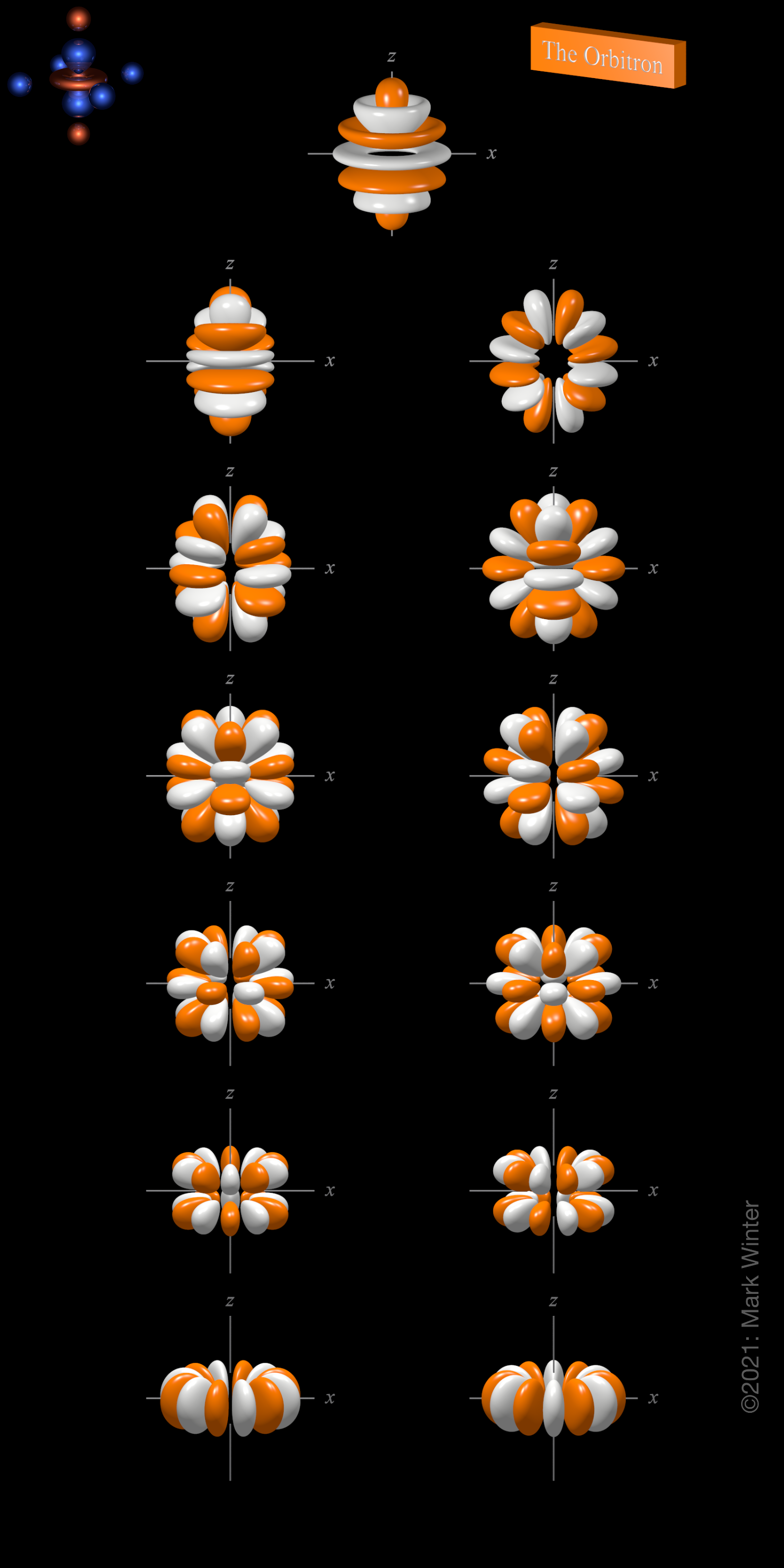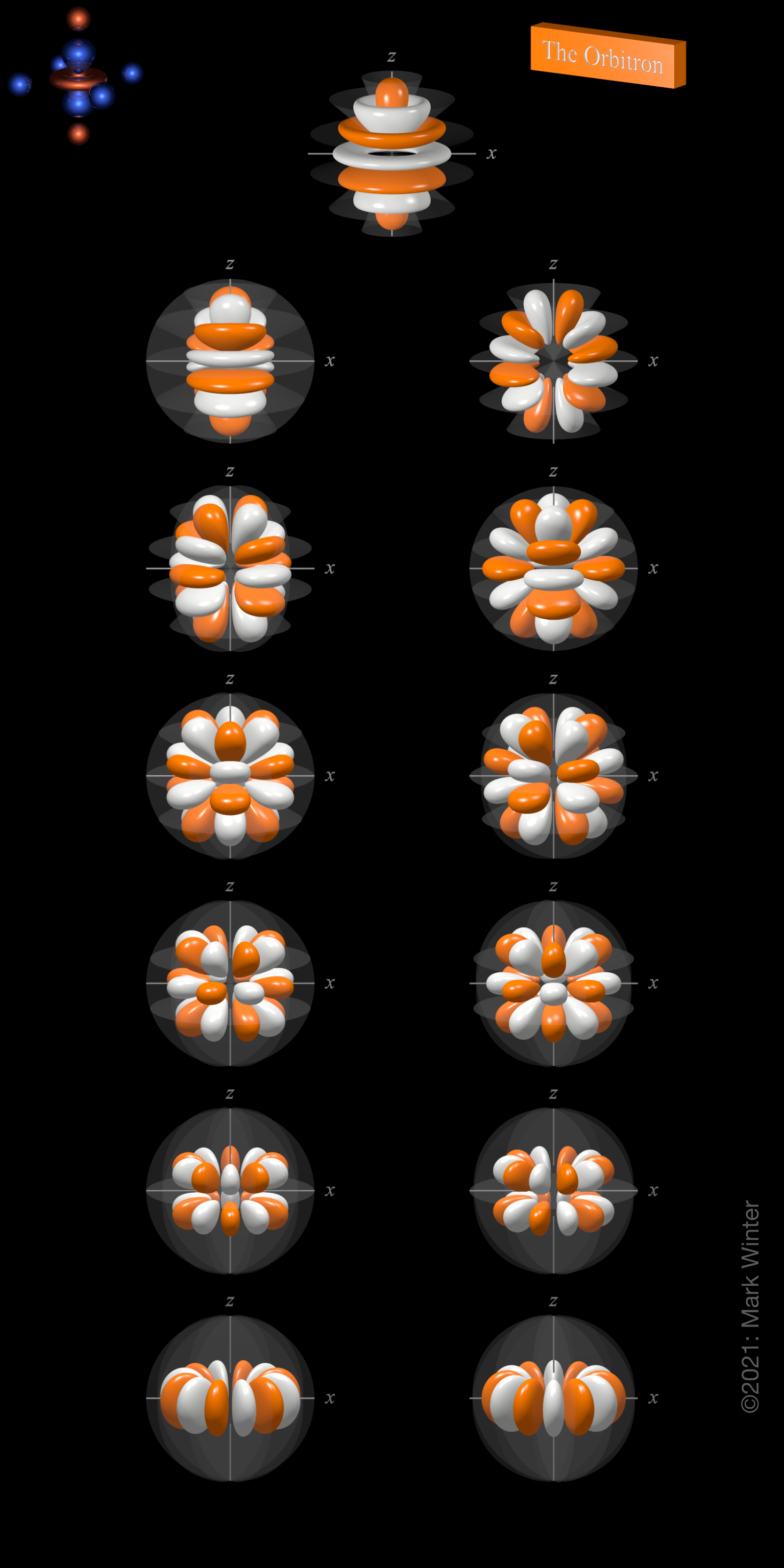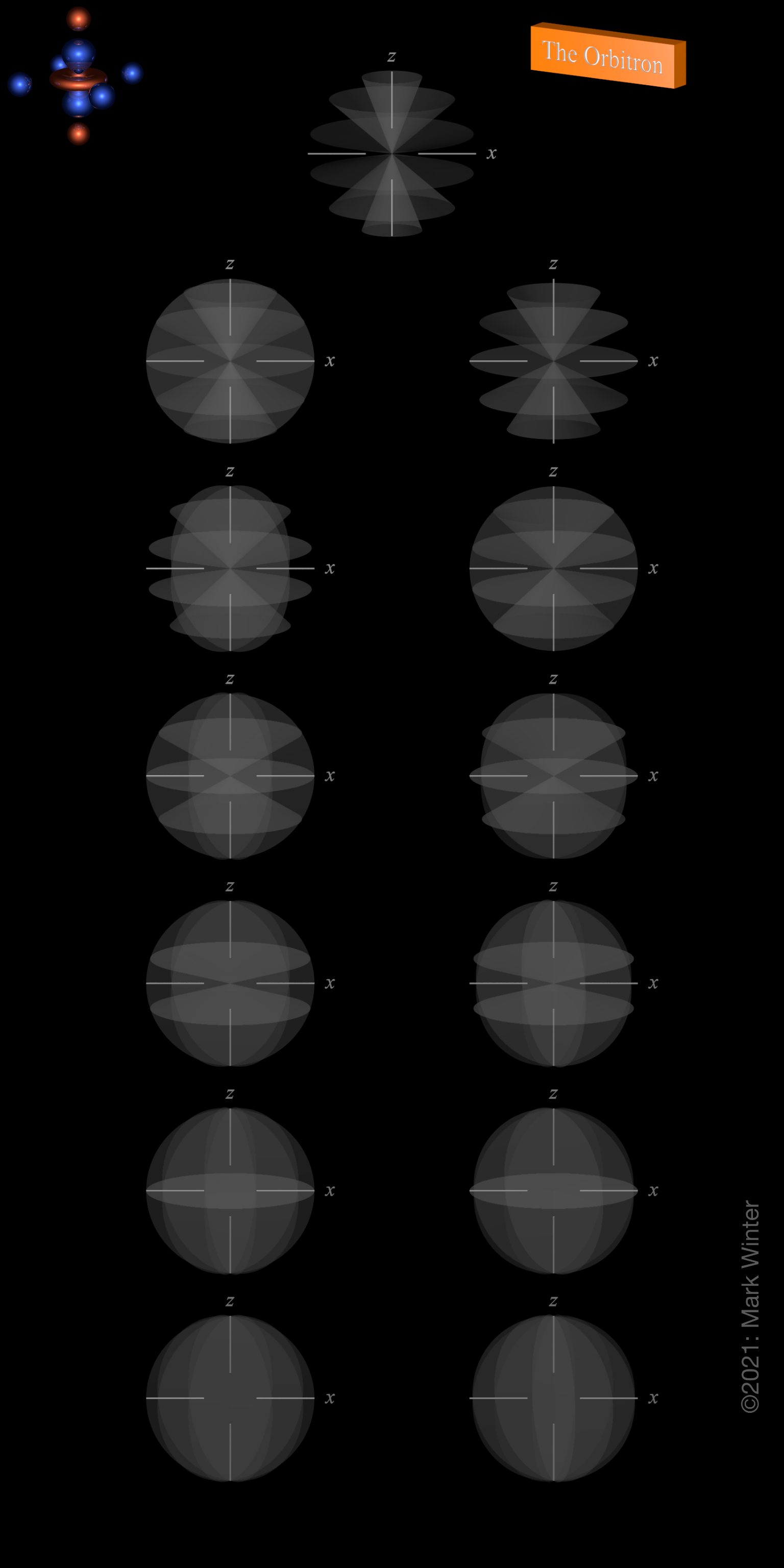7i atomic orbitals
There are 13 7i orbitals. These are labelled 7iz6, 7iyz6, 7ixz6, 7ixyz4, 7i(x2–y2)z4, 7iy(3x2–y2)(11z3–3zr2), 7ix(x2–3y2)(11z3–3zr2), 7i(4xy)(x2–y2)(11z2–r2), 7i(x4–6x2y2+y4)(11z2–r2), 7i(yz)(5x4–10x2y2+y4), 7i(xz)(x4–10x2y2+5y4), 7i(6yx5–20x3y3+6xy5), and 7ix6–15x4y2+15x2y4–y6).
The shape of the 7i orbitals. Orbital names are shown beneath the images. For each, the orange zones are where the values of the 7i wave functions are positive while the white zones denote negative values.
The 7iz6 orbital (top row in the image above) is an abbreviation for 7i(231z6 - 315z4r2 + 105z2r4–5r6).
The 7iyz6 orbital (left orbital in next to top row in the above image) is an abbreviation for 7iy(33z5–30z3r2+5zr4). The 7ixz6 orbital (right orbital in next to top row in the above image) is an abbreviation for 7ix(33z5–30z3r2+5zr4). These two orbitals are related to each other by a 90° rotation about the z-axis.
The 7ixyz4 orbital (left orbital in third row from the top in the above image) is an abbreviation for 7i(2xy)(33z4–18z2r2+r4). The 7i(x2–y2)z4 orbital (right orbital in third row from the top in the above image) is an abbreviation for 7i(x2–y2)(33z4–18z2r2+r4). These two orbitals are related to each other by a 45° rotation about the z-axis.
The 7iy(3x2–y2)(11z3–3zr2) orbital is the left orbital in the fourth row from the top in the above image. The 7ix(x2–3y2)(11z3–3zr2) orbital is the right orbital in the fourth row from the top in the above image. These two orbitals are related to each other by a 30° rotation about the z-axis.
The 7i(4xy)(x2–y2)(11z2–r2) orbital is the left orbital in the fifth row from the top in the above image. The 7i(x4–6x2y2+y4)(11z2–r2) orbital is the right orbital in the fifth row from the top in the above image. These two orbitals are related to each other by a 22.5° rotation about the z-axis.
The 7i(yz)(5x4–10x2y2+y4) orbital is the left orbital in the sixth row from the top in the above image. The 7i(xz)(x4–10x2y2+5y4) orbital is the right orbital in the sixth row from the top in the above image. These two orbitals are related to each other by a 18° rotation about the z-axis.
The 7i(6yx5–20x3y3+6xy5) orbital is the left orbital in the sixth row from the top in the above image. The 7ix6–15x4y2+15x2y4–y6) orbital is the right orbital in the sixth row from the top in the above image. These two orbitals are related to each other by a 15° rotation about the z-axis.
The 7i orbitals have no spherical nodes but the higher i orbitals (8i, 9i, ...) are more complex since they have one or more spherical nodes.
The OrbitronTM, a gallery of orbitals on the WWW: https://winter.group.shef.ac.uk/orbitron/
Copyright 2002-2023 Prof. Mark Winter [The University of Sheffield]. All rights reserved.


